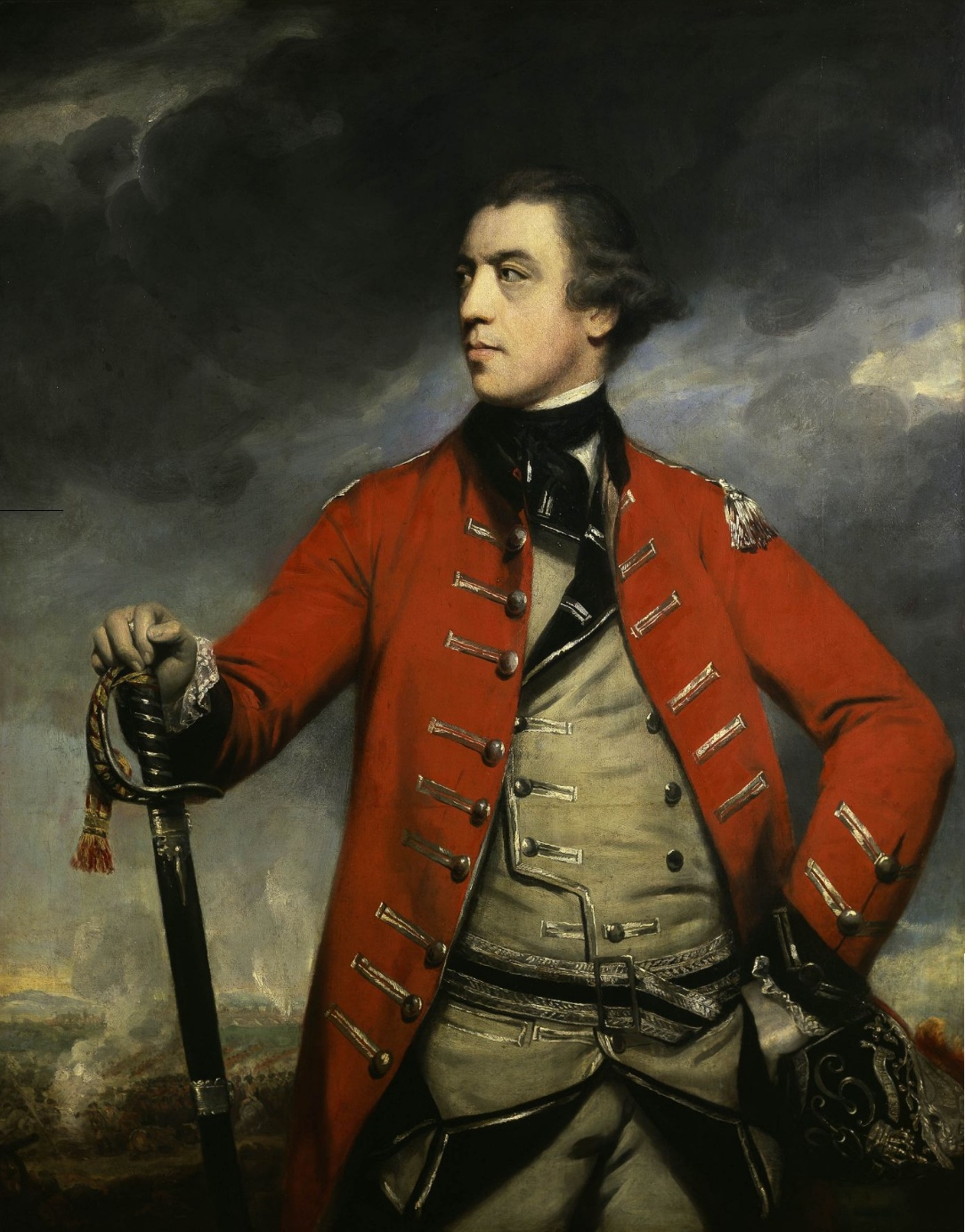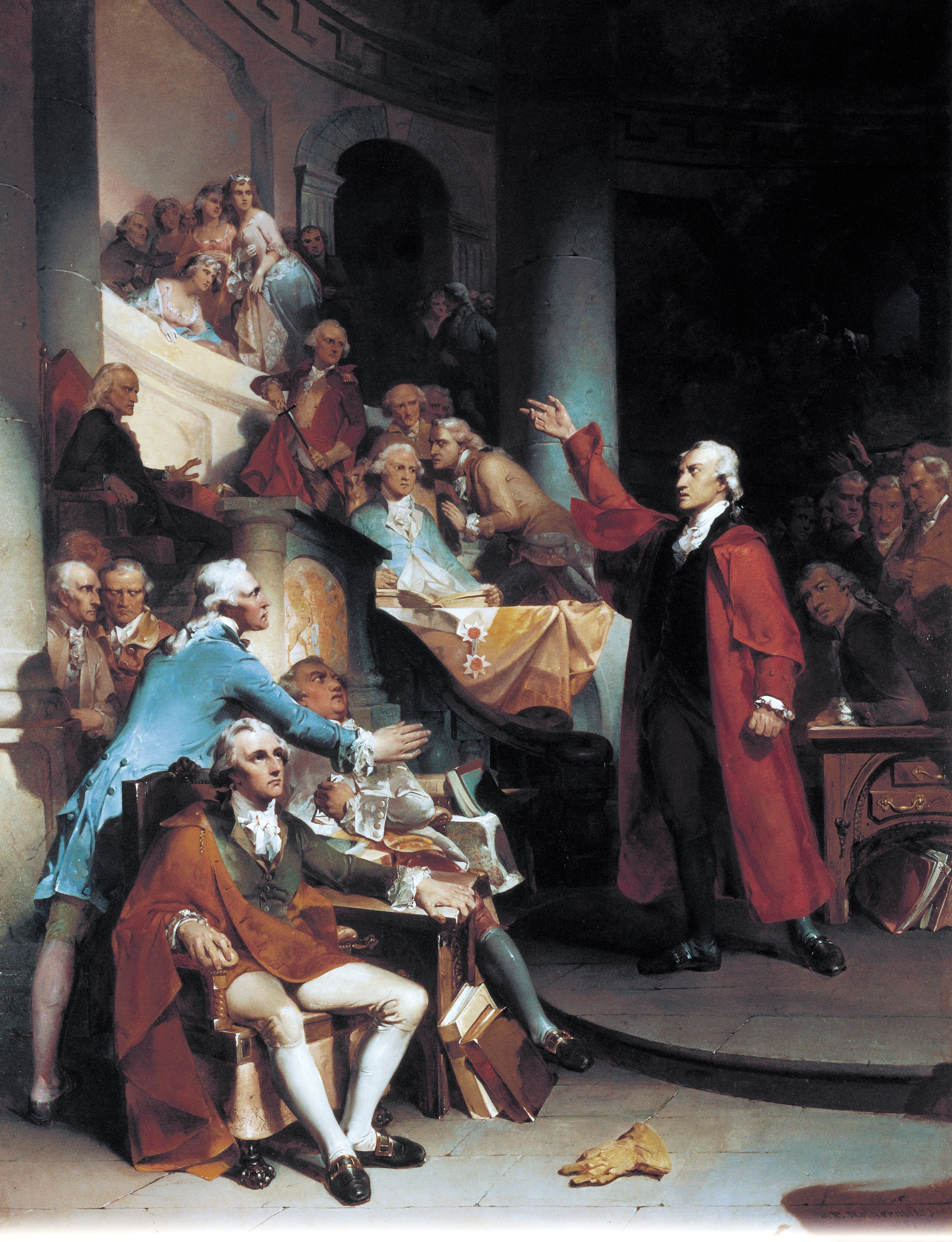|
Albemarle Barracks
Albemarle Barracks was a prisoner-of-war camp for British prisoners during the American Revolutionary War. History Following Gen. John Burgoyne's defeat at the Battle of Saratoga, in 1777, several thousand British and German ( Hessian and Brunswickian) troops, of what came to be known as the Convention Army, were marched to Cambridge, Massachusetts. For various reasons, the Continental Congress desired to move them south. One of Congress' members, Col. John Harvie/Harvey, Sr. and sons offered some of his lands outside of Charlottesville, Virginia. The remaining soldiers (some 2,000 British, upwards of 1,900 German, and roughly 300 women and children) marched south in late 1778 - arriving at the site (near Ivy Creek) in January, 1779. As the barracks were barely sufficient in construction, the officers were paroled to live as far away as Richmond, Virginia and Staunton, Virginia. The camp was never adequately provisioned, and yet the prisoners did manage to make something of the ... [...More Info...] [...Related Items...] OR: [Wikipedia] [Google] [Baidu] |
Prisoner-of-war Camp
A prisoner-of-war camp (often abbreviated as POW camp) is a site for the containment of enemy fighters captured by a belligerent power in time of war. There are significant differences among POW camps, internment camps, and military prisons. Purpose-built prisoner-of-war camps appeared at Norman Cross in England in 1797 during the French Revolutionary Wars and HM Prison Dartmoor, constructed during the Napoleonic Wars, and they have been in use in all the main conflicts of the last 200 years. The main camps are used for marines, sailors, soldiers, and more recently, airmen of an enemy power who have been captured by a belligerent power during or immediately after an armed conflict. Civilians, such as merchant mariners and war correspondents, have also been imprisoned in some conflicts. With the adoption of the Geneva Convention on the Prisoners of War in 1929, later superseded by the Third Geneva Convention, prisoner-of-war camps have been required to be open to inspe ... [...More Info...] [...Related Items...] OR: [Wikipedia] [Google] [Baidu] |
American Revolutionary War
The American Revolutionary War (April 19, 1775 – September 3, 1783), also known as the Revolutionary War or American War of Independence, was a major war of the American Revolution. Widely considered as the war that secured the independence of the United States, fighting began on April 19, 1775, followed by the Lee Resolution on July 2, 1776, and the Declaration of Independence on July 4, 1776. The American Patriots were supported by the Kingdom of France and, to a lesser extent, the Dutch Republic and the Spanish Empire, in a conflict taking place in North America, the Caribbean, and the Atlantic Ocean. Established by royal charter in the 17th and 18th centuries, the American colonies were largely autonomous in domestic affairs and commercially prosperous, trading with Britain and its Caribbean colonies, as well as other European powers via their Caribbean entrepôts. After British victory over the French in the Seven Years' War in 1763, tensions between the motherla ... [...More Info...] [...Related Items...] OR: [Wikipedia] [Google] [Baidu] |
John Burgoyne
General John Burgoyne (24 February 1722 – 4 August 1792) was a British general, dramatist and politician who sat in the House of Commons from 1761 to 1792. He first saw action during the Seven Years' War when he participated in several battles, most notably during the Portugal Campaign of 1762. Burgoyne is best known for his role in the American Revolutionary War. He designed an invasion scheme and was appointed to command a force moving south from Canada to split away New England and end the rebellion. Burgoyne advanced from Canada but his slow movement allowed the Americans to concentrate their forces. Instead of coming to his aid according to the overall plan, the British Army in New York City moved south to capture Philadelphia. Burgoyne fought two small battles near Saratoga but was surrounded by American forces and, with no relief in sight, surrendered his entire army of 6,200 men on 17 October 1777. His surrender, says historian Edmund Morgan, "was a great turnin ... [...More Info...] [...Related Items...] OR: [Wikipedia] [Google] [Baidu] |
Battle Of Saratoga
The Battles of Saratoga (September 19 and October 7, 1777) marked the climax of the Saratoga campaign, giving a decisive victory to the Americans over the British in the American Revolutionary War. British General John Burgoyne led an invasion army of 7,200–8,000 men southward from Canada in the Champlain Valley, hoping to meet a similar British force marching northward from New York City and another British force marching eastward from Lake Ontario; the goal was to take Albany, New York. The southern and western forces never arrived, and Burgoyne was surrounded by American forces in upstate New York short of his goal. He fought two battles which took place 18 days apart on the same ground south of Saratoga, New York. He gained a victory in the first battle despite being outnumbered, but lost the second battle after the Americans returned with an even larger force. Burgoyne found himself trapped by much larger American forces with no relief, so he retreated to Saratoga (now ... [...More Info...] [...Related Items...] OR: [Wikipedia] [Google] [Baidu] |
Hessian (soldiers)
Hessians ( or ) were German soldiers who served as auxiliaries to the British Army during the American Revolutionary War. The term is an American synecdoche for all Germans who fought on the British side, since 65% came from the German states of Hesse-Kassel and Hesse-Hanau. Known for their discipline and martial prowess, around 30,000 Germans fought for the British during the war, comprising a quarter of British land forces. While regarded, both contemporaneously and historiographically, as mercenaries, Hessians were legally distinguished as auxiliaries: whereas mercenaries served a foreign government of their own accord, auxiliaries were soldiers hired out to a foreign party by their own government, to which they remained in service. Auxiliaries were a major source of income for many small and relatively poor German states, typically serving in wars in which their governments were neutral. Like most auxiliaries of this period, Hessians served with foreign armies as entire u ... [...More Info...] [...Related Items...] OR: [Wikipedia] [Google] [Baidu] |
Convention Army
The Convention Army (1777–1783) was an army of British and allied troops captured after the Battles of Saratoga in the American Revolutionary War. Convention of Saratoga On 17 October 1777, British General John Burgoyne surrendered his army according to terms negotiated with American general Horatio Gates following the 7 October Battle of Bemis Heights. The terms were titled the ''Convention of Saratoga'', and specified that the troops would be sent back to Europe after giving a parole that they would not fight again in the conflict. Morrissey (2000), p. 87 The British army was accorded the honours of war, and Burgoyne had his sword returned to him by Gates. Baroness Frederika Riedesel, wife of General Riedesel, just emerged from her shelter in the cellar of the Marshall House, attended the surrender ceremony which she vividly describes in her ''Journal'': "On the 17th of October the capitulation was consummated. The generals waited upon the American general-in-chief, Ga ... [...More Info...] [...Related Items...] OR: [Wikipedia] [Google] [Baidu] |
Charlottesville, Virginia
Charlottesville, colloquially known as C'ville, is an independent city in the Commonwealth of Virginia. It is the county seat of Albemarle County, which surrounds the city, though the two are separate legal entities. It is named after Queen Charlotte. At the 2020 census, the population was 46,553. The Bureau of Economic Analysis combines the City of Charlottesville with Albemarle County for statistical purposes, bringing its population to approximately 150,000. Charlottesville is the heart of the Charlottesville metropolitan area, which includes Albemarle, Buckingham, Fluvanna, Greene, and Nelson counties. Charlottesville was the home of two presidents, Thomas Jefferson and James Monroe. During their terms as Governor of Virginia, they lived in Charlottesville, and traveled to and from Richmond, along the historic Three Notch'd Road. Orange, located northeast of the city, was the hometown of President James Madison. The University of Virginia, founded by Jeffe ... [...More Info...] [...Related Items...] OR: [Wikipedia] [Google] [Baidu] |
Richmond, Virginia
(Thus do we reach the stars) , image_map = , mapsize = 250 px , map_caption = Location within Virginia , pushpin_map = Virginia#USA , pushpin_label = Richmond , pushpin_map_caption = Location within Virginia##Location within the contiguous United States , pushpin_relief = yes , coordinates = , subdivision_type = Country , subdivision_name = , subdivision_type1 = State , subdivision_name1 = , established_date = 1742 , , named_for = Richmond, United Kingdom , government_type = , leader_title = Mayor , leader_name = Levar Stoney ( D) , total_type = City , area_magnitude = 1 E8 , area_total_sq_mi = 62.57 , area_land_sq_mi = 59.92 , area_water_sq_mi = 2.65 , elevation_m = 50.7 , elevation_ft = 166.45 ... [...More Info...] [...Related Items...] OR: [Wikipedia] [Google] [Baidu] |
Staunton, Virginia
Staunton ( ) is an independent city in the U.S. Commonwealth of Virginia. As of the 2020 census, the population was 25,750. In Virginia, independent cities are separate jurisdictions from the counties that surround them, so the government offices of Augusta County are in Verona, which is contiguous to Staunton. Staunton is a principal city of the Staunton- Waynesboro Metropolitan Statistical Area, which had a 2010 population of 118,502. Staunton is known for being the birthplace of Woodrow Wilson, the 28th U.S. president, and as the home of Mary Baldwin University, historically a women's college. The city is also home to Stuart Hall, a private co-ed preparatory school, as well as the Virginia School for the Deaf and Blind. It was the first city in the United States with a fully defined city manager system. History The area was first settled in 1732 by John Lewis and family. In 1736, William Beverley, a wealthy planter and merchant from Essex County, was granted by the Crown ... [...More Info...] [...Related Items...] OR: [Wikipedia] [Google] [Baidu] |
Frederick, Maryland
Frederick is a city in and the county seat of Frederick County, Maryland. It is part of the Baltimore–Washington metropolitan area, Baltimore–Washington Metropolitan Area. Frederick has long been an important crossroads, located at the intersection of a major north–south Native American trail and east–west routes to the Chesapeake Bay, both at Baltimore and what became Washington, D.C. and across the Appalachian mountains to the Ohio River watershed. It is a part of the Washington-Arlington-Alexandria, DC-VA-MD-WV Metropolitan Statistical Area, which is part of a greater Washington-Baltimore-Arlington, DC-MD-VA-WV-PA Combined Statistical Area. The city's population was 78,171 people as of the 2020 United States census, making it the second-largest incorporated city in Maryland (behind Baltimore). Frederick is home to Frederick Municipal Airport (Maryland), Frederick Municipal Airport (International Air Transport Association airport code, IATA: FDK), which accommodates gene ... [...More Info...] [...Related Items...] OR: [Wikipedia] [Google] [Baidu] |
Winchester, Virginia
Winchester is the most north western independent city in the Commonwealth of Virginia. It is the county seat of Frederick County, although the two are separate jurisdictions. The Bureau of Economic Analysis combines the city of Winchester with surrounding Frederick County for statistical purposes. As of the 2020 census, the city's population was 28,120. Winchester is the principal city of the Winchester, Virginia–West Virginia, metropolitan statistical area, which is a part of the Baltimore–Washington metropolitan area. Winchester is home to Shenandoah University and the Museum of the Shenandoah Valley. History Native Americans Indigenous peoples lived along the waterways of present-day Virginia for thousands of years before European contact. Archeological, linguistic and anthropological studies have provided insights into their cultures. Though little is known of specific tribal movements before European contact, the Shenandoah Valley area, considered a sacred co ... [...More Info...] [...Related Items...] OR: [Wikipedia] [Google] [Baidu] |

.jpg)





